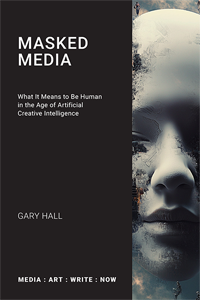NFTs - Does It Have To End This Way?
 Thursday, September 28, 2023 at 9:42AM
Thursday, September 28, 2023 at 9:42AM Developments surrounding non-fungible tokens (NFTs) are just one recent way in which the discourses of modernity have endeavoured to continue to privilege individualistic, original and fixed modes of production and reception in the face of the transition to a post-Gutenberg galaxy of non-rivalrous, easily reproducible copies. And this is the case in spite of the potential NFTs were initially held to have to subvert the traditional art world by cutting out cultural intermediaries such as galleries, museums and dealers, and handing over the selling and exchange of art to decentralised communities of creators.
NFTs use a cryptographic protocol of the kind that underpins cryptocurrencies such as Bitcoin and Ethereum to track the ownership of a unique digital asset – say, the original digital file of Chris Torres’ Nyan Cat gif or Twitter founder Jack Dorsey’s first tweet – and guarantee its authenticity and scarcity, thus enabling it to be monetised. First posted online in April 2011, an NFT of the original Nyan Cat was sold in February 2021 for £416,000. Similarly, an NFT of Dorsey’s first tweet was bought for $2.9m at the peak of the non-fungible token market in August 2021, which was then worth a total of $28bn in monthly trading.
Yet by the beginning of 2023 one commentator could already write, following the closure of the NFT marketplace on Sam Bankman-Fried’s bankrupt crypto-exchange FTX, that ‘the most glaring sign of NFTs’ dismal future is not their descending value – by July 2023 the NFT of Dorsey’s tweet was worth just $4 - but their growing resemblance to the rest of the art market’.
95% of NFT collections have now been found to be worthless.
 Gary Hall | Comments Off |
Gary Hall | Comments Off | 





